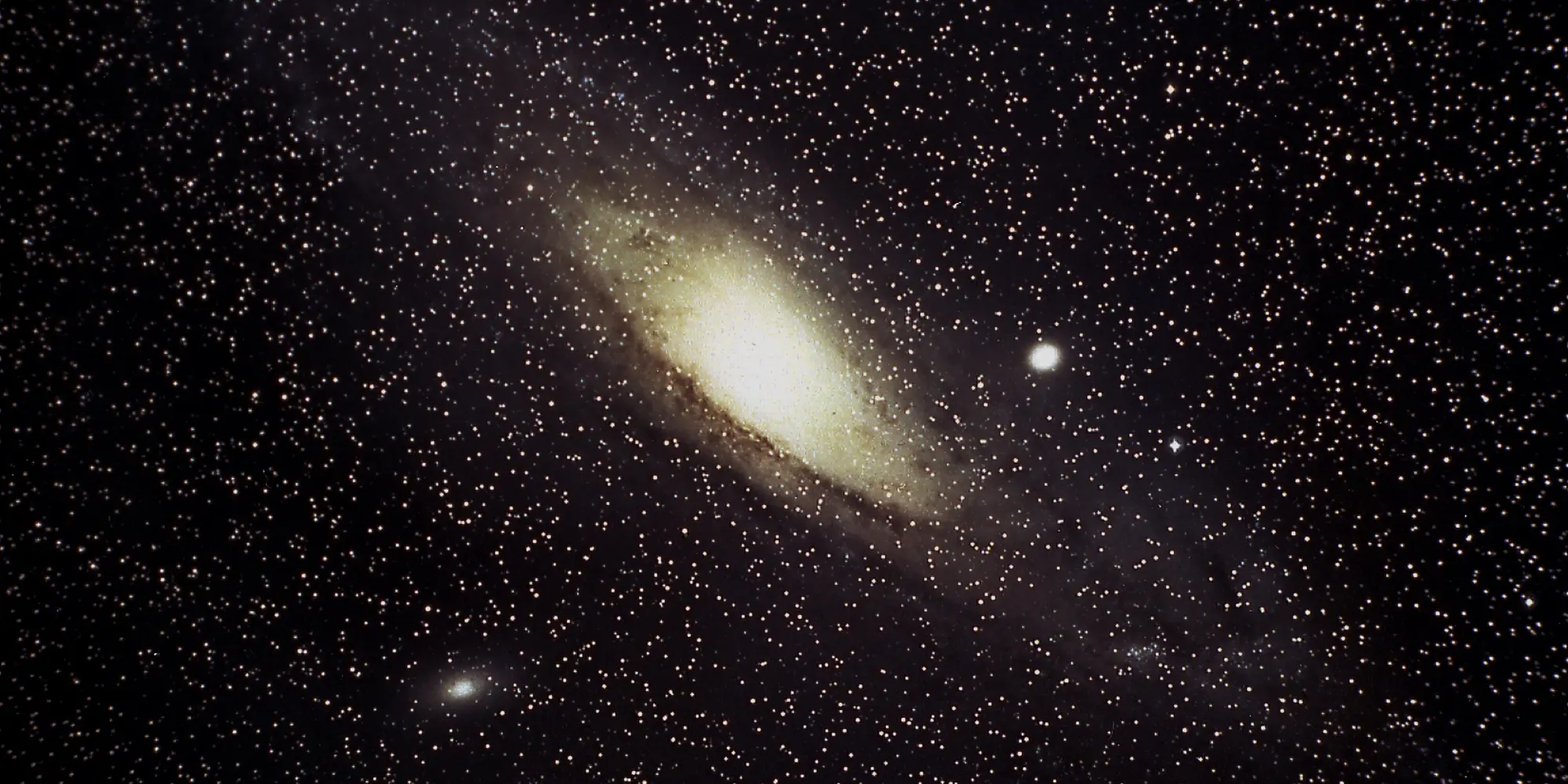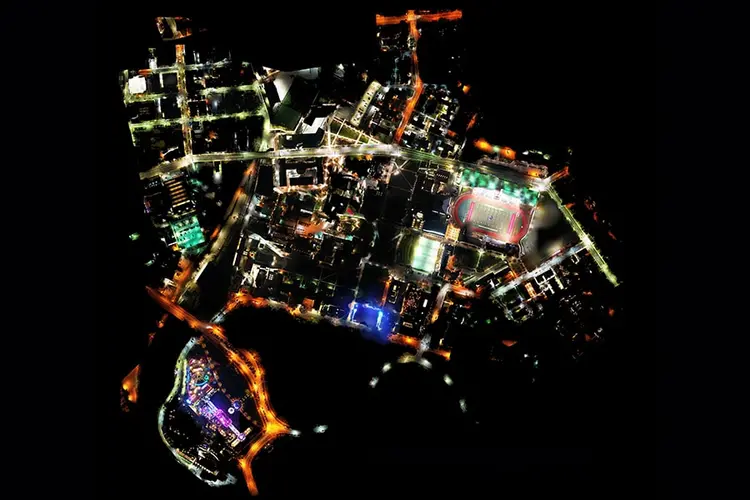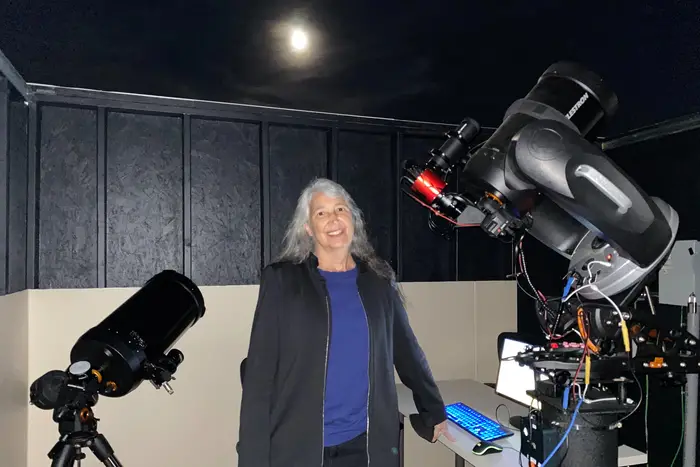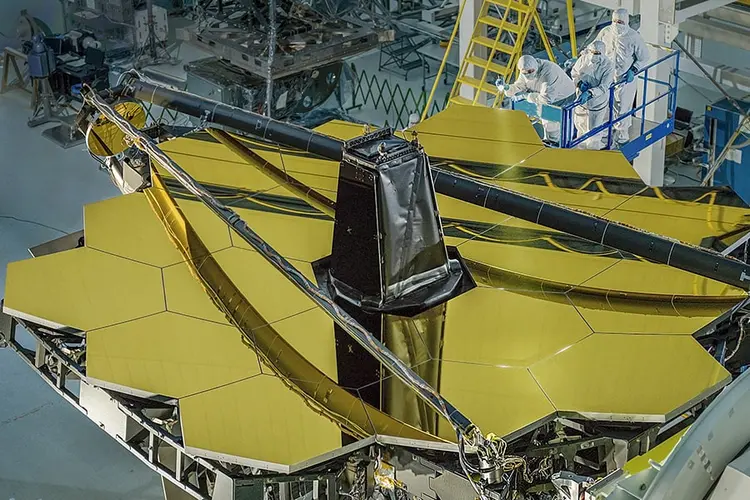
Observatory Creates Out-of-This-World Opportunities for Veterans
Media Inquiries
Before Tom�s Cabrera arrived at Carnegie Mellon University, he served as a missionary in Denver with Christ in the City, working with people suffering from homelessness and the isolation that goes with it.
"In that population are a lot of veterans," said the third-year doctoral candidate in the Department of Physics(opens in new window). "The experience gave me more of a picture of the different kinds of social needs in the world."
Because of his experience, Cabrera is one of several members of the Carnegie Mellon community assisting with a new project designed to help veterans reach for the stars.
The H.J. Heinz III campus of the Veterans Affairs Pittsburgh Healthcare System in O'Hara Township is the first VA hospital in the U.S. to install an observatory on its campus. Cabrera along with other Carnegie Mellon students and Diane Turnshek(opens in new window), a lecturer in the Department of Physics, will be among the volunteers who will help patients at the VA hospital use the telescope and provide lectures on topics such as the James Webb Space Telescope, black holes, Saturn and solar eclipses.
"We'll be doing science, but it's also about being another person in the life of these veterans who they can talk to. Astronomy is the vector to get us in there," Cabrera said. "My high hopes for this are that it is going to enrich and improve the quality of people's lives."
"We'll be doing science, but it's also about being another person in the life of these veterans who they can talk to. Astronomy is the vector to get us in there." — Tom�s Cabrera
The Astronomy for Disabled Veterans project, responsible for the new observatory, is spearheaded by James Surman, a certified hospital management consultant and a Fourth Degree Knight of Columbus. Surman worked with Nick Haller, who was then the associate chief nurse of VA Pittsburgh's Community Living Center (nursing home).
"The project was inspired by Dr. Alan Teo, a psychiatrist at the Veterans Affairs Health Care System, who studied loneliness and depression as factors in veteran's mental health," Surman said.
Surman, along with a dedicated team of Assembly 0940 Knights of Columbus members, raised $31,000 to build the observatory, which includes an electronic sliding roof. In addition, the Amateur Astronomers Association of Pittsburgh (AAAP) and Carnegie Mellon are providing ongoing volunteers and expertise to the project.
The building houses a Celestron telescope preprogrammed with the coordinates for hundreds of celestial objects. While the observatory is wheelchair accessible, the images from the telescope also are piped into an indoor gathering room at the Veteran Recovery Center so that patients can view activity on a 65-inch screen. One goal is to have veterans also trained to run the equipment.
Surman said that going forward other VA hospitals can use the local program as a model.
The observatory celebrated a ribbon-cutting and dedication ceremony and star party on Oct. 14.
Diane Turnshek visits the first observatory installed at a VA hospital. She and students will provide educational talks and assist in running the telescope. Image courtesy of the VA Pittsburgh Healthcare System
"The idea for an observatory for the veterans is spectacular," Turnshek said. "This is an idea that is potentially going to spread to other campuses within the VA system."
Turnshek, who is also an AAAP member, learned about the project when she heard Surman discuss the idea at a meeting several years ago. She approached him afterward with an offer to help. In addition to volunteers, Carnegie Mellon also supplied books and videos for an astronomy library at the hospital.
"All of these are his ideas, like the observatory and a training set of classes based on astronomy and what the telescope would see," said Turnshek who is active in teaching the public about astronomy as well as advising the Carnegie Mellon Astronomy Club.
Rich Dollish, another AAAP volunteer, has been conducting star viewing parties and working to finalize setting up the telescope. He agreed with Cabrera about the hope that people will be enriched by the telescope and the connections it can make, both on Earth and to the night sky.
"Depression and isolation are a big issue among veterans. While it's a wonderful facility, much of the staff goes home at 5 p.m. At night, the residents don't have much to keep them occupied," he said. "I just want them to appreciate the beauty of everything around them."
— Related Content —



